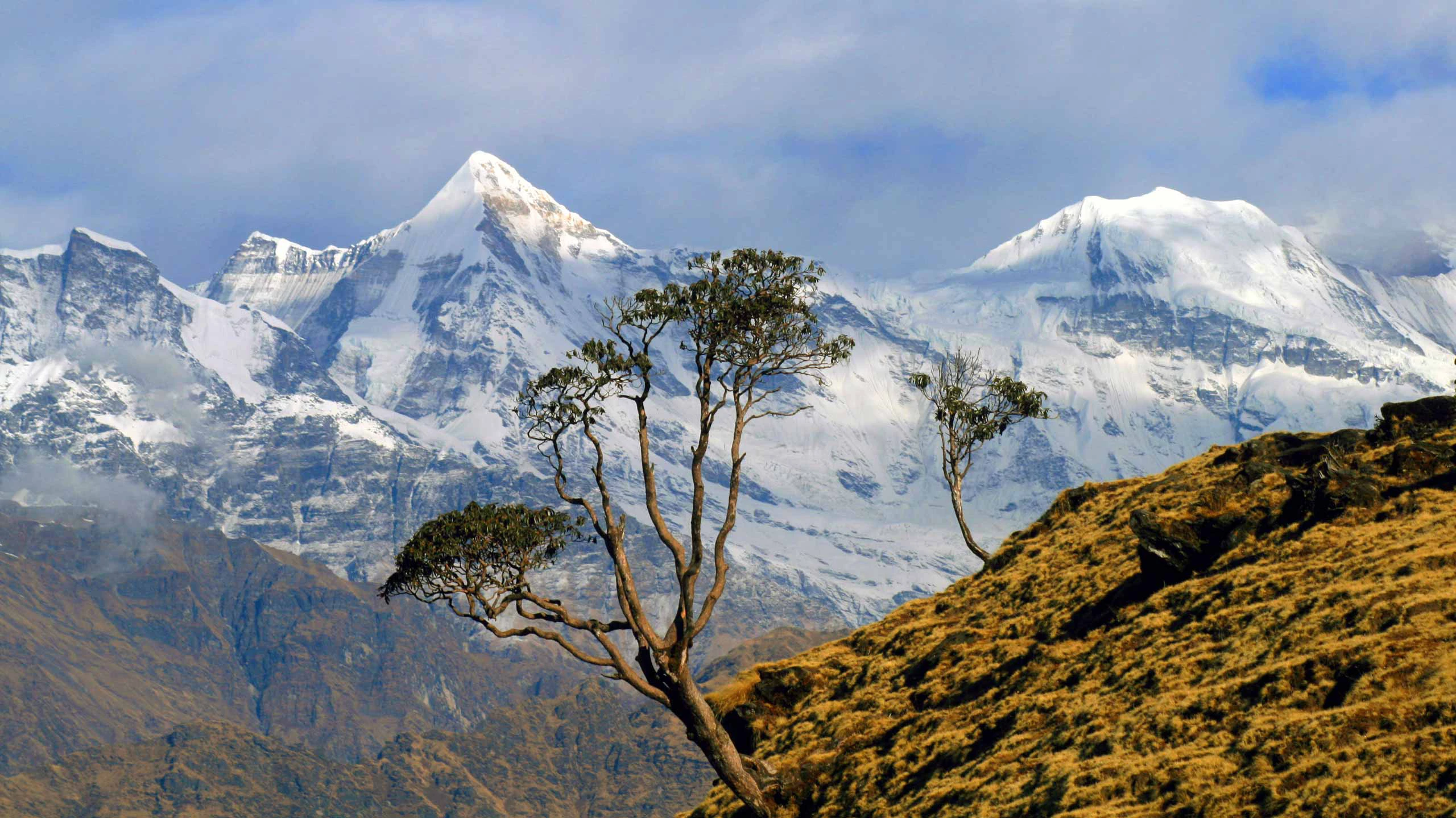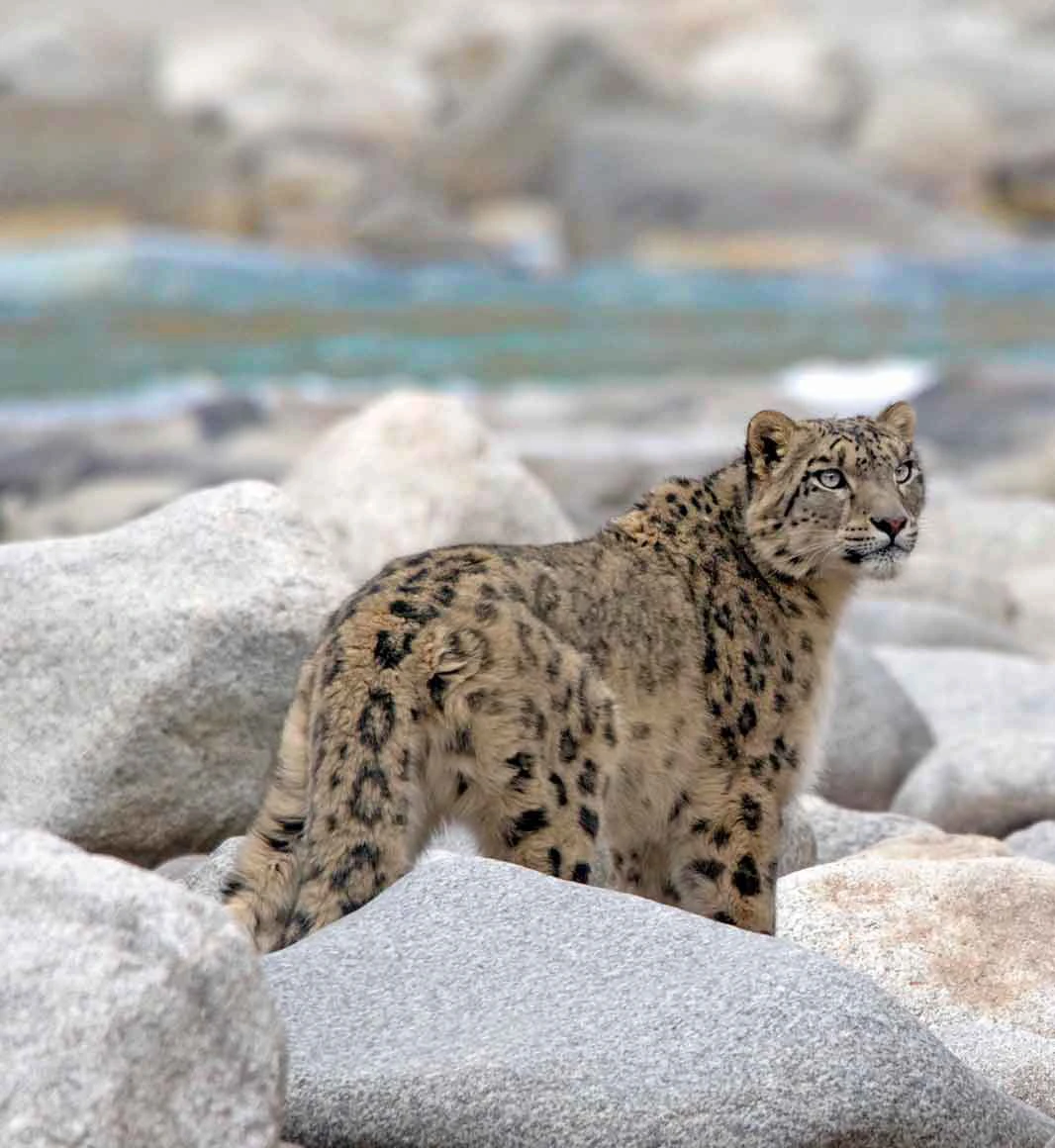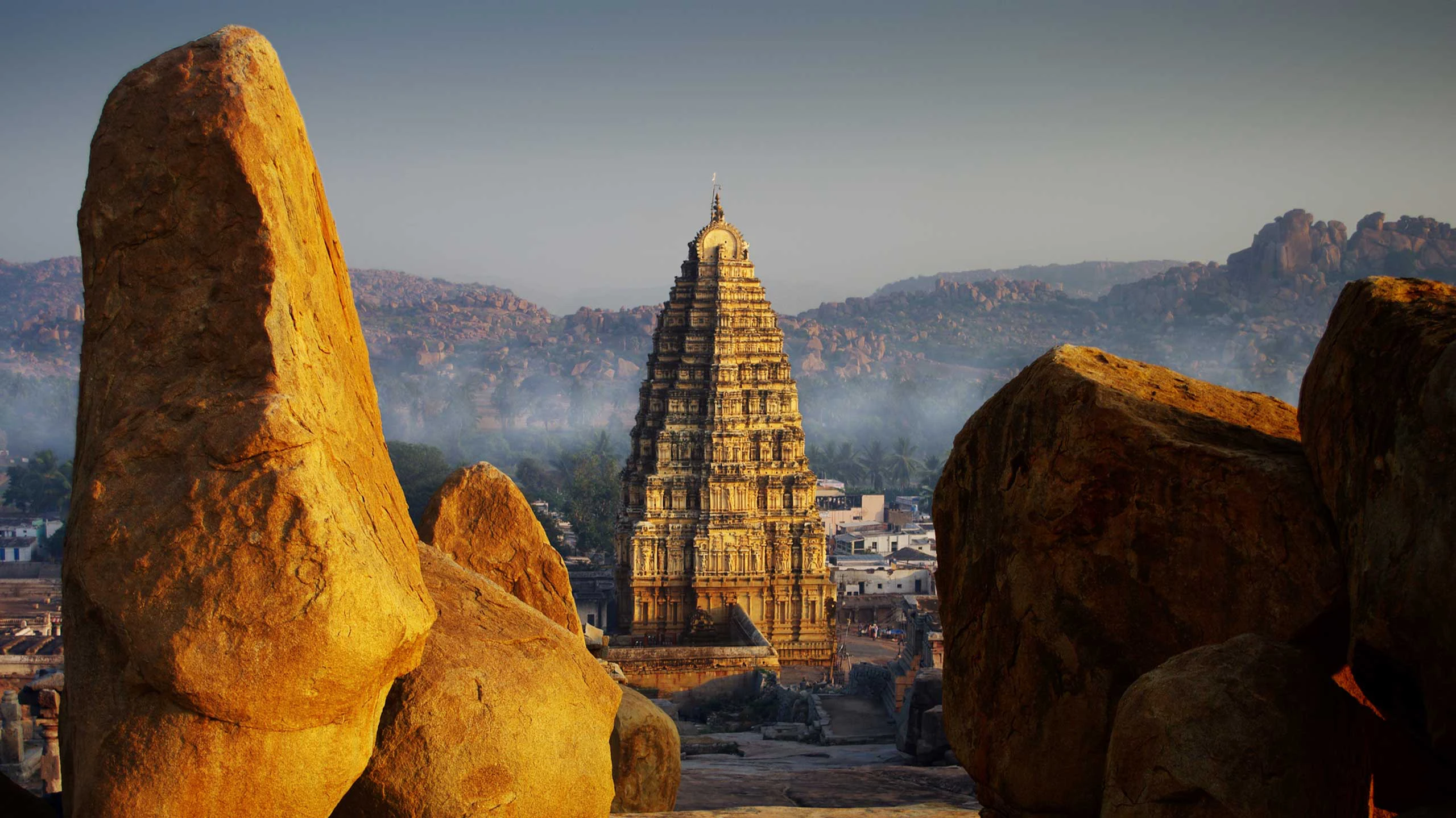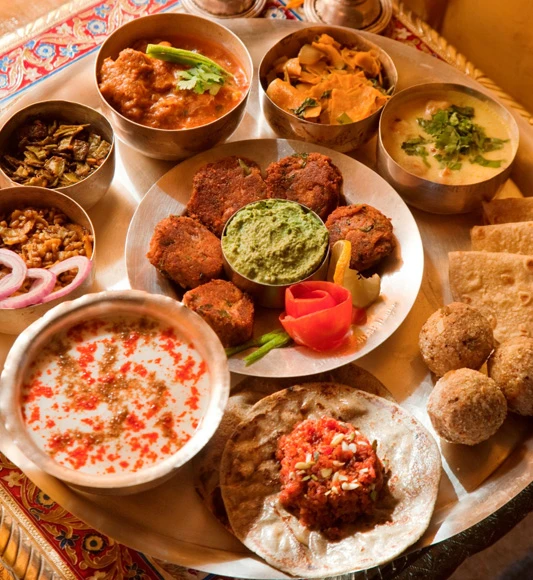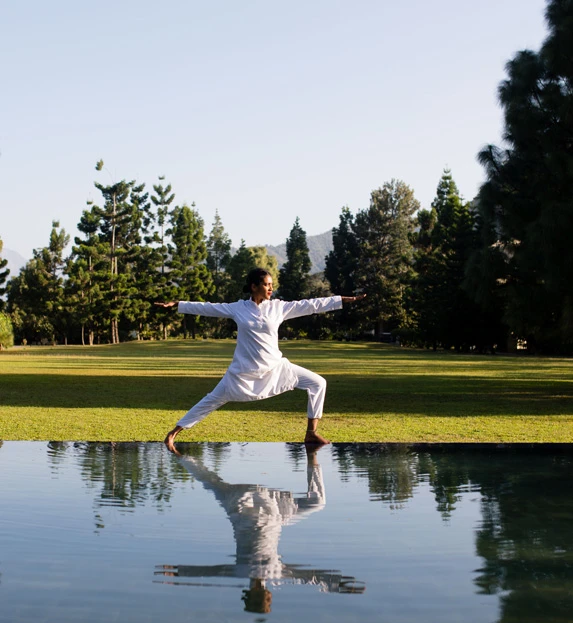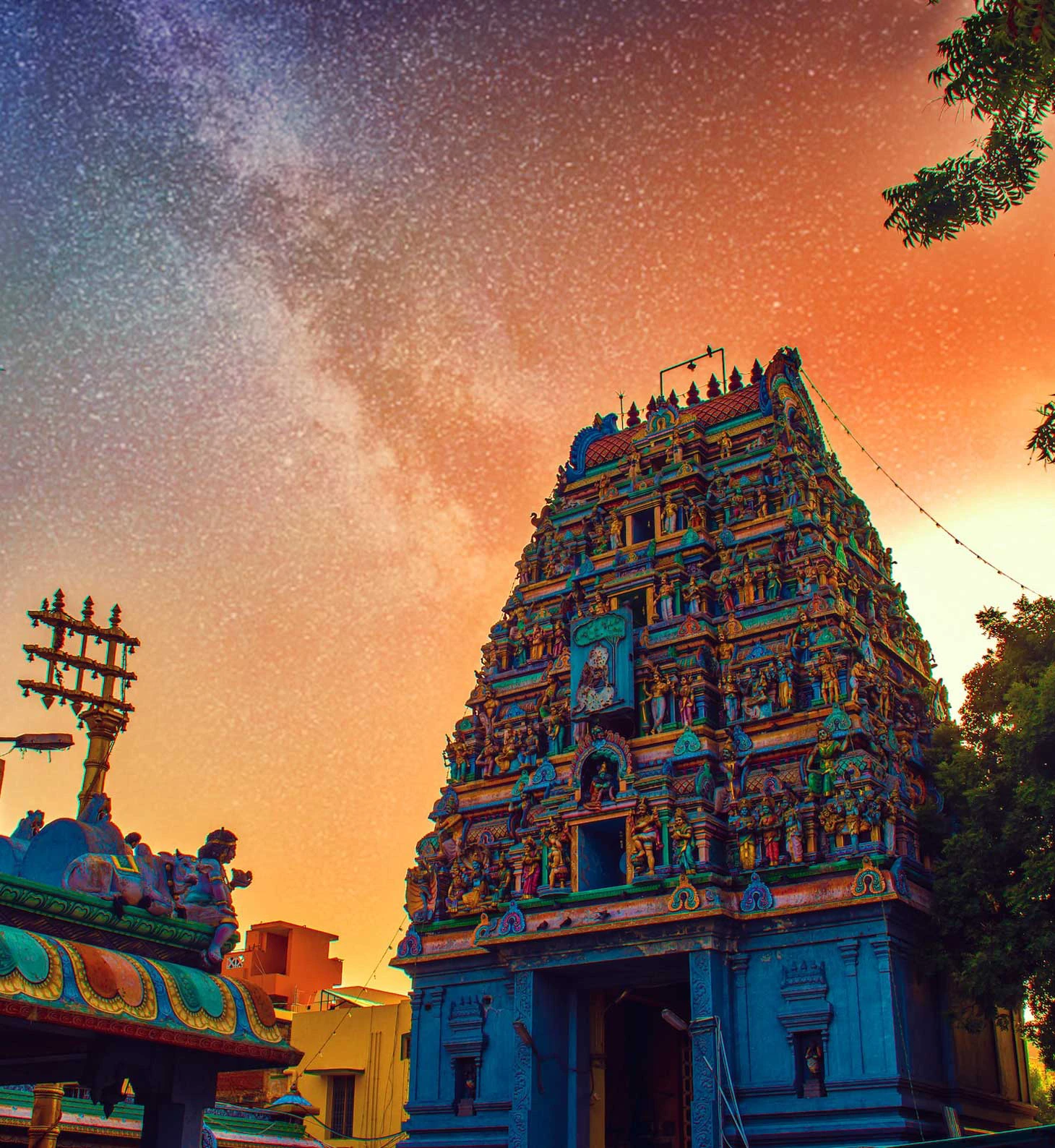
Tamil Nadu, Chennai
A vast region, South India comprises five states: Tamil Nadu, Kerala, Karnataka, Andhra Pradesh and the relatively newly formed Telangana. Culturally, the region is so incredibly different from North and Central India that it feels like an entirely different country. It is this diversity that adds to the allure of India and makes it so unique compared to other Asian civilisations.
If you are travelling to India for the first time, then the south is a good place to start. Tamil Nadu and Kerala are my favourite parts of South India. Perhaps I am biased because I lived in Kerala for a brief period and absolutely adore traditional Tamil food. Still, there is a certain charm that these two contrasting regions possess that makes them so quintessentially Indian. From ancient ports and historic towns to quaint villages and awe-inspiring monuments, there is so much to explore in this region, but I’ve handpicked a few of my favourite places to visit here that I hope you will experience first-hand.
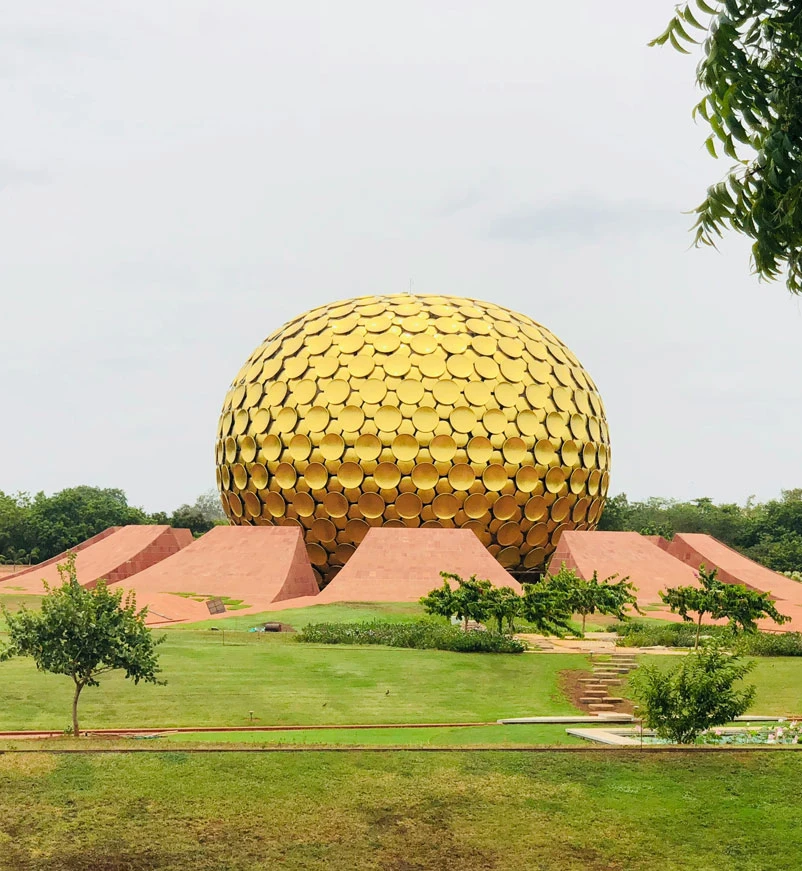
Auroville, Pondicherry
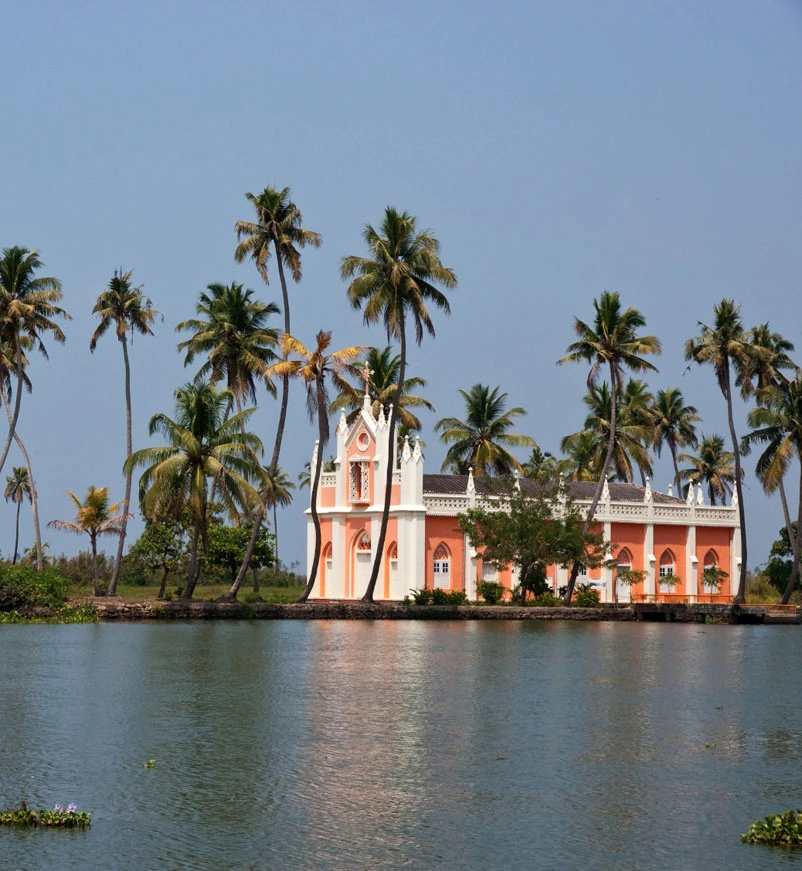
Vembanad Lake, Kerala
"I remember seeing my father’s detailed sketches of the temples from his archaeological explorations and being completely mesmerised by them. That childhood memory still makes my visits here so very special."
1. Mahabalipuram – see history come alive in this UNESCO World Heritage Site
Located about an hour’s drive from Tamil Nadu’s capital Chennai, Mahabalipuram, also known as Mamallapuram, used to be a thriving seaport during the great Pallava dynasty and is renowned for its historic temples and monuments built during the 7th and 8th centuries. Although smaller compared to other majestic temples of Tamil Nadu, their perfectly symmetrical scale and intricate stonework have earned them a place on UNESCO’s coveted list of World Heritage monuments.
I remember seeing my father’s detailed sketches of the temples from his archaeological explorations and being completely mesmerised by them. That childhood memory still makes my visits here so very special. You could easily spend an entire day strolling around various temple sites and along the beach. Sunsets are magical here, especially by the Shore Temple.
Other important highlights are Panch Rathas – a set of five monolithic rock temples carved in the form of chariots dedicated to the five Pandava brothers from the Mahabharata; Krishna’s Butterball – a massive boulder resting miraculously on a slope near the Panch Rathas that is reminiscent of the Golden Rock in Myanmar; Varaha Cave Temple from the late 7th century; and the massive open-air bas relief depicting the story of the descent of the Ganges, which is believed to be the largest and finest example of rock cult sculpture in India.
2. Pondicherry – the “French Riviera of the East”
Officially known as Puducherry, Pondicherry was a famous French colonial settlement until 1954 and still retains its charming and aristocratic character in the historic French Quarter, also called the ‘White Town.’ On the other side of the town lies the Tamil Quarter with beautiful traditional houses and markets.
Being an admirer of all things French, Pondicherry has always been one of my favourite places in India, with leafy boulevards, chic boutiques, villas and cafes, and a lovely promenade along the beach which lends itself to leisurely strolls at dawn and dusk. All the street signs are marked in French and Tamil and some French schools and cultural centres still remain operational as before.
Many of the old mansions have been converted into boutique hotels, which provide an ideal base during your vacation for soaking up the laid-back atmosphere of the town. Besides its colonial legacy, Pondicherry is also a world-renowned centre for spiritual learning owing to its close connection to the great Indian philosopher, Sri Aurobindo. His ashram and Auroville – a spiritual township established in 1968 – remain hugely popular and active communities for cultural and intellectual exchange and development.
3. Thanjavur (Tanjore) – an important centre of South Indian religion, art and architecture
This historic temple city is best known for its 11th-century Brihadeeswara Temple, which was built during the famed Chola Dynasty period. It’s also an important centre for traditional arts and crafts, specialising in Thanjavur painting, bronze sculpture and classical music and dance.
Saraswathi Mahal Library housed in the centuries-old palace complex holds one of the most important collections of palm-leaf manuscripts. If you are interested in history, architecture and culture, Tanjore is one of the must-visit places in South India.
4. Chettinad – experience a bygone era in this culinary hotspot
Known for its grand mansions and unique cuisine, this tiny region of about 80 square kilometres comprises 76 villages belonging to the Chettiars who are a wealthy mercantile community. With business interests spanning across Southeast Asia, Chettiaers are very well travelled and their unique architecture, hospitality and cuisine are unlike anywhere else in India.
Just the way the traditional mansions of Shekhawati in Rajasthan are known for their frescoes, Chettar houses are renowned for their unique fusion of architectural styles featuring vast halls and courtyards as well as ornate Belgian glasswork, ceramic tiles and stone, iron and wooden pillars.
Most of the families have settled abroad so their houses are now lying vacant, but many are beautifully preserved and a few have been converted into charming boutique hotels. Chettiar meals are a lavish and incredibly varied affair and a must-experience part feature of a holiday in South India.
5. Madurai – discover one of India’s oldest cities
One of Tamil Nadu’s most historic towns, Madurai is known for the multi-coloured Meenakshi Temple with its 14 gopurams (towers) dominating the city skyline. An important pilgrimage centre, the temple is visited by millions of devotees throughout the year and is an excellent place to experience India’s religious fervour.
The night ceremony at the temple where Lord Shiva’s deity is carried by the temple priests to his wife Meenakshi’s shrine amidst great fanfare and the early morning and late afternoon aarti ceremony is incredibly interesting.
6. Rajakkad Estate near Dindigul – a haven for birdwatching
A birdwatcher’s paradise, Rajakkad Estate near Dindigul sits at the base of the Western Ghats affording breathtaking views. If you are travelling overland between Tamil Nadu and Kerala, the estate makes a wonderful place to break the journey, especially if you are interested in birding, yoga or hiking in the lush natural surroundings of forested hills and coffee plantations. At the heart of the historic estate is an intimate luxury hotel with just seven rooms offering simple yet comfortable accommodation with wholesome food and service.
Highlights of South India
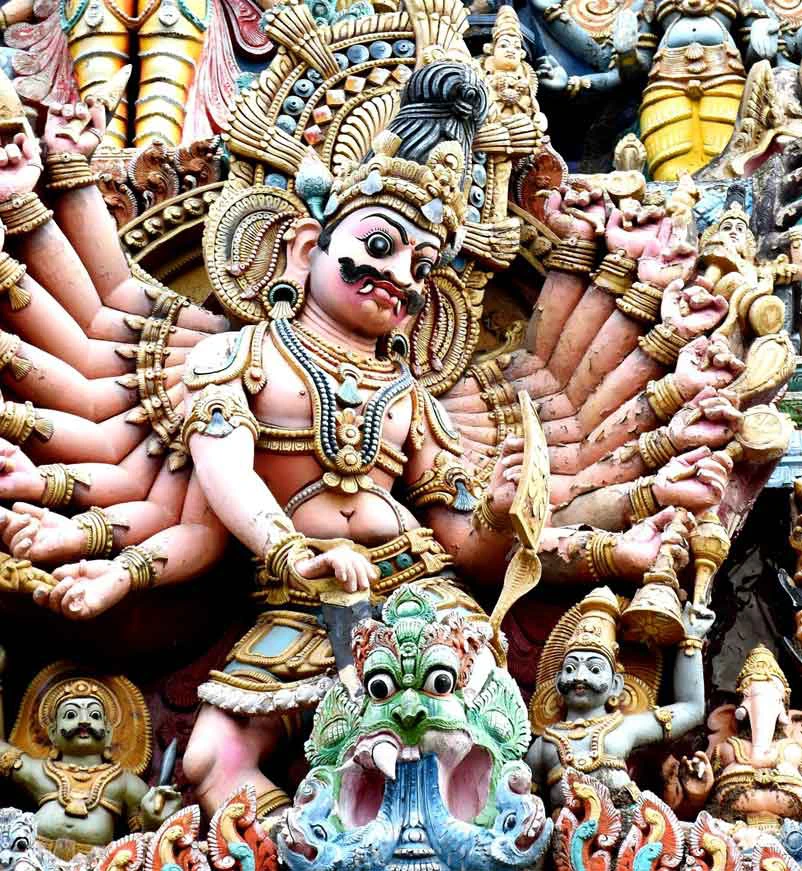
Madurai Meenakshi Temple in Madurai
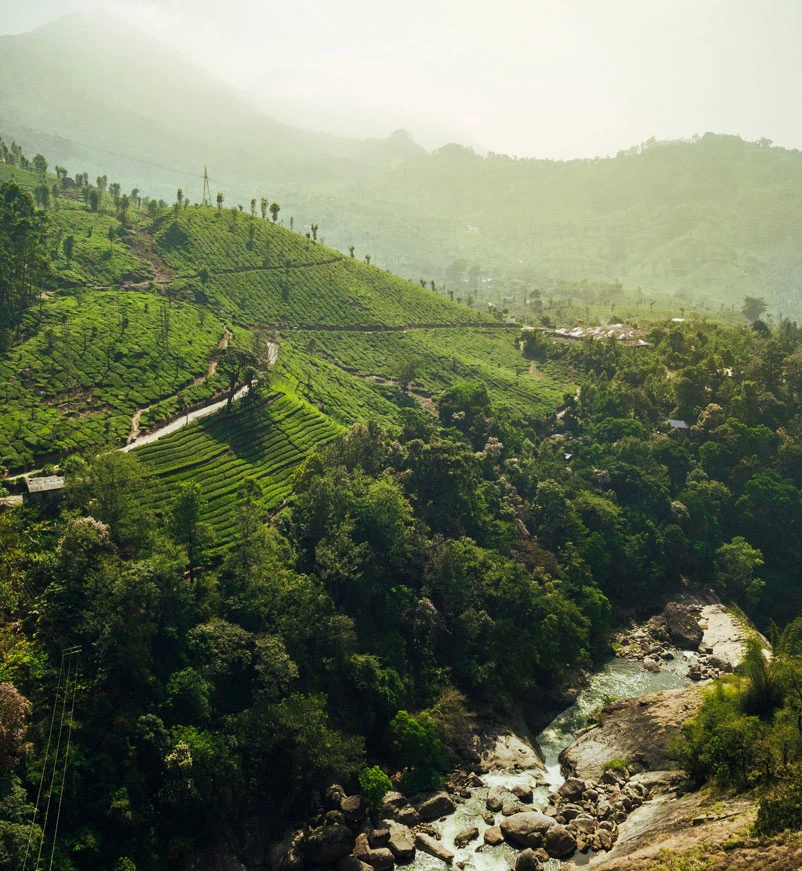
Breathing in the valley’s morning breeze in Munnar, Kerala
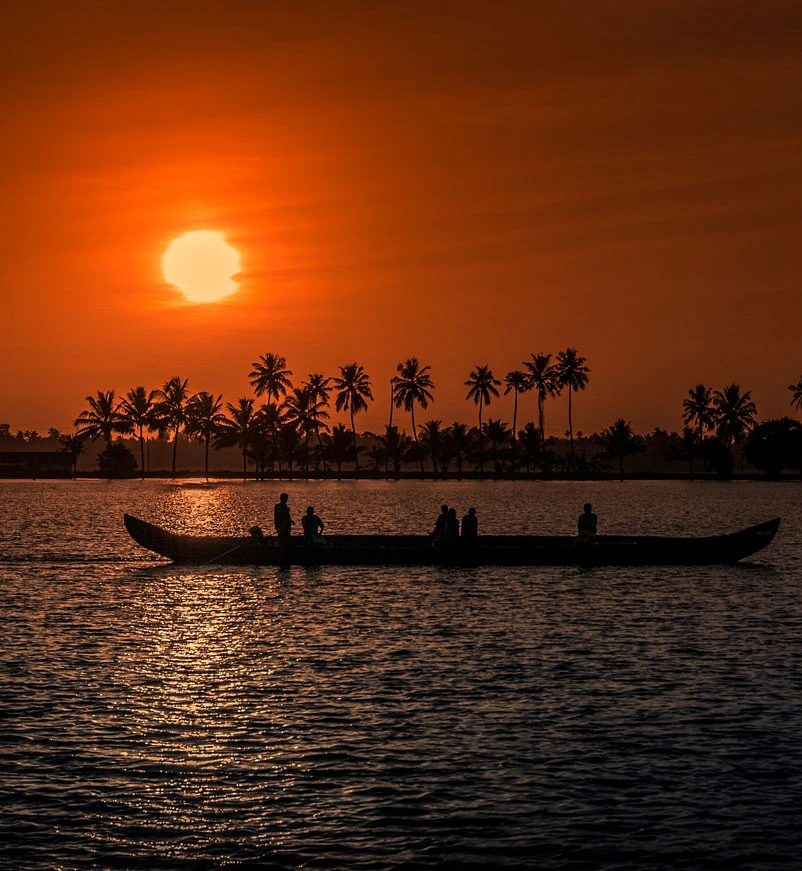
Beautiful sunset in Kerala
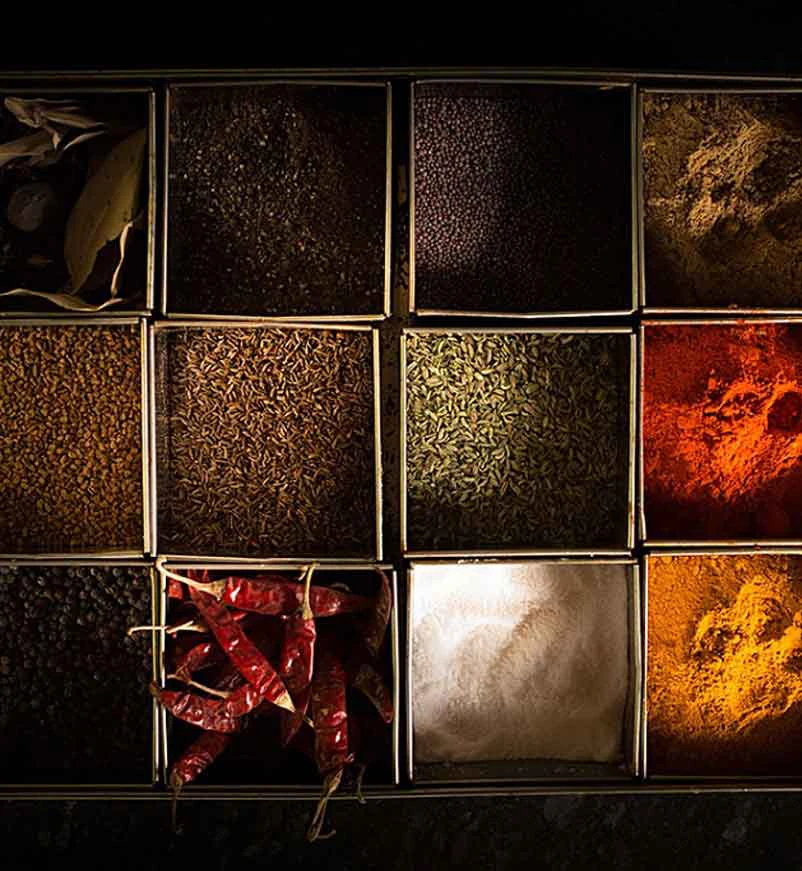
Learn how to cook delicious Southern Indian recipes. (© Neeleshwar Hermitage)
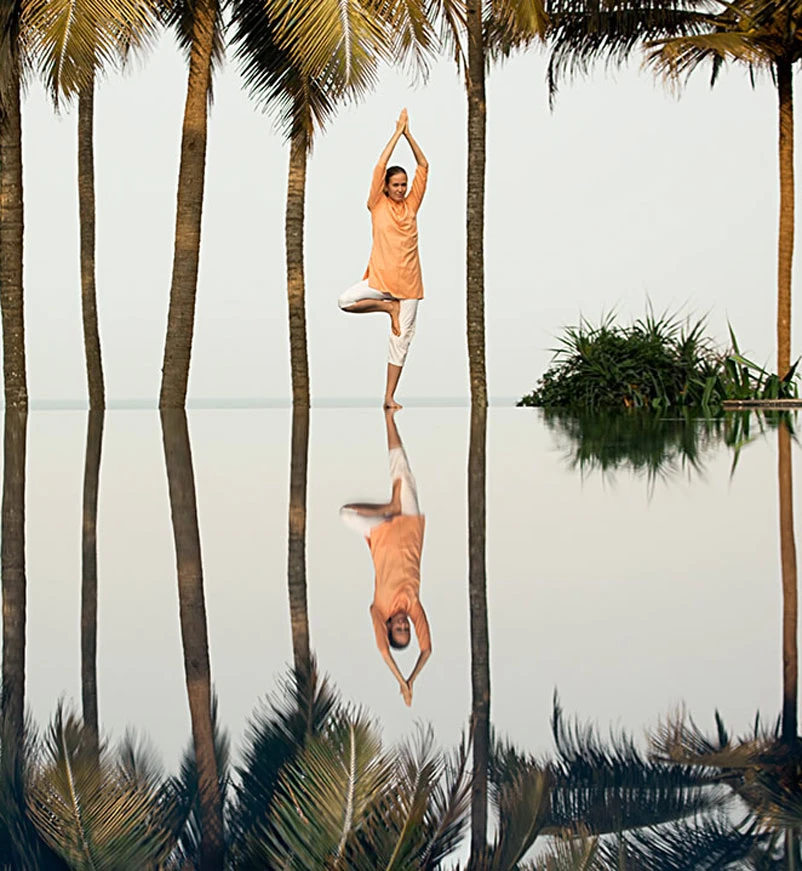
Yoga at Neeleshwar Hermitage in Northern Kerala. (© Neeleshwar Hermitage)
7. Wayanad – escape the tourist trail and lose yourself in nature
For pristine nature and wilderness, Wayanad is undoubtedly the finest region in South India. Located in northern Kerala, this area abounds in vast spice, coffee and rubber plantations, and tropical rainforests that are teeming with birdlife and lend beautifully to active outdoor adventures including walking, hiking and cycling.
Going to Wayanad is like travelling back in time, to experience the privileged lifestyle traditional planters once enjoyed. Lose yourself in blissful natural surroundings far away from the usual tourist hustle and bustle.
8. Munnar, Kerala’s Tea Country – verdant tea plantations and hiking trails
Reminiscent of Darjeeling and Assam, Munnar’s rolling hills are covered in a lush blanket of tea plantations. Being a tea lover, I enjoy visiting tea plantations and factories and have been fortunate enough to explore many wonderful tea-growing areas across India, Sri Lanka, China and Japan, but Munnar holds a very special place in my heart as it is here that I was introduced to tea plantations and the art of tea tasting.
Home to the endangered Nilgiri Tahr, elephants and a healthy variety of birds, Munnar is excellent for trekking and hiking with a range of trails that are suitable for walkers of all levels. Further north lies the much more off-the-beaten-track region of Valparai, which besides the verdant plantations, is home to fascinating wildlife including lion-tailed macaques and Indian bison who are found in the forested hills that surround the plantations.
9. Kerala’s Backwaters – experience local life as you wind your way along scenic waterways
Palm-fringed backwaters meandering through a serene landscape dotted with quaint villages and green paddy fields, Kerala is a fairytale setting. The best way to experience these tranquil backwaters is by taking a cruise along the vast network of winding waterways and lakes in a traditional rice boat.
If you are feeling more adventurous and looking for an authentic rural experience, then staying in a family home in one of the villages soaking up the myriad of local spectacles is a thoroughly rewarding experience. Take in toddy tappers dangling from tall coconut trees, locals working in rice fields, women making coir products and children cycling to their tiny village schools.
When I was living in Kerala, I used to enjoy exploring this part of the country the most, from the famous areas of Alleppey and Kumarakom to the less frequented parts of Nedumudi further south and Nileshwar up north.
10. Kochi (Cochin) – an important centre for Keralan arts
This thriving city port was one of the prime seaports on the ancient Spice Route and is best known for its charming old quarter known as Fort Kochi, featuring beautiful churches, colonial mansions, ancient warehouses, a Jewish synagogue and a lively antiques and spice market. I so fondly remember taking leisurely strolls at dusk ending up by the fishing nets to catch the sunset.
Like Pondicherry, Fort Kochi was a famous colony, first established by the Portuguese in 1503. It was taken over 160 years later by the Dutch who remained in power until 1795 when they were defeated by the British. This unique combination of Kochi’s colonial legacy remains intact in various historic buildings that line its leafy streets and narrow back alleys.
Cochin is also an important centre for traditional arts and one of the not-to-be-missed experiences here is to catch a performance of traditional Kathakali dance. For me, the best part is going backstage to see the artists put on elaborate make-up and extravagant costumes.
11. Nileshwaram – unplug and refresh in the cultural capital of Kasaragod
Like the backwaters, Kerala’s sandy beaches are iconic and the remote northern coast remains one of my favourite beach destinations in South India. Here, the quiet and wonderfully local beaches of Nileshwaram, fringed by coconut plantations, pristine backwaters and lush hillside spice gardens offer a refreshing and relaxing retreat for body, mind and soul.
Set on twelve acres, the boutique resort of Neeleshwar Hermitage is one of my preferred beach resorts in all of South India. Traditionally built using locally sourced materials, the resort is deeply focused on holistic sustainability and wellness and features beautiful Keralan wood-and-thatch architecture with exquisite food and service.
If you prefer to be active, there are plenty of activities in the vicinity including cycling, village visits, exploring Bekal Fort and cruising on the backwaters in a traditional rice boat. The resort specialises in Yoga and Ayurveda.
Ready to take the road less travelled?
Related articles
